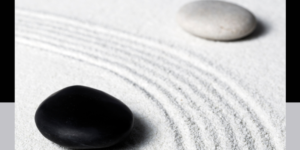The day of a job interview is a critical moment in any recruitment process. It is the culmination of weeks or even months of preparation, research, and self-reflection. According to Tews, Stafford and Michel (2018), interview etiquette—the customary code of professional behaviour expected during job interviews—plays a decisive role in hiring outcomes. Employers form their initial impressions within seconds of meeting a candidate, and these first moments can significantly influence the final decision. This essay discusses how to present oneself effectively on the day of the interview, covering appearance, punctuality, communication skills, non-verbal cues, and overall professionalism.
1.0 The Importance of First Impressions
First impressions are powerful and often enduring. Forbes and Jackson (1980) demonstrated that interviewers’ initial perceptions of a candidate’s non-verbal behaviour, such as posture, eye contact, and handshake, have a measurable impact on their evaluations. Appearance, punctuality, and confidence all contribute to shaping that impression.
In practical terms, this means dressing appropriately for the organisation’s culture. As Sapra (2025) notes in Mastering Interview Skills: A Comprehensive Guide, even when an organisation has a casual dress code, candidates should opt for formal, clean, and well-fitted attire on the day of the interview. Dressing professionally conveys respect, seriousness, and attention to detail. For example, a finance graduate applying to a corporate bank should wear a tailored suit, whereas a design applicant might opt for professional yet creative attire that reflects the industry’s style.
Research by Kaushik and Kaushik (2011) further confirms that appearance and grooming are considered part of a candidate’s “soft skills” — non-technical attributes that influence employability. Employers often associate professionalism in appearance with reliability and competence.
2.0 Arriving Prepared and Punctual
Punctuality demonstrates reliability and good time management — essential traits for any job. Candidates are advised to plan their route, check public transport schedules, and allow extra time for unforeseen delays. As Turner (2004) points out in Behavioural Interview Guide, arriving late can create a negative impression that may overshadow even strong interview responses.
Arriving early, on the other hand, offers an opportunity for composure and mental preparation. Candidates can review their notes, observe the organisation’s environment, and perhaps gather useful insights from company literature in the reception area. This proactive approach aligns with Lim, Chavan and Chan’s (2014) findings, which suggest that awareness of organisational culture prior to the interview correlates positively with performance outcomes.
Moreover, small courtesies—such as greeting the receptionist warmly and maintaining a polite demeanour—are crucial. Tews et al. (2018) found that respectful behaviour toward all staff members, even those not on the interview panel, can influence overall hiring decisions. A polite conversation with a receptionist or assistant can indirectly reinforce the impression of a candidate’s interpersonal skills.
3.0 Managing Nerves and Building Confidence
Almost all candidates experience nervousness before an interview. Bass (2016) in Journal of Higher Education Theory and Practice suggests that moderate levels of anxiety can actually enhance performance by sharpening focus. The key is to manage it effectively through breathing techniques, positive self-talk, and preparation.
A confident yet humble demeanour demonstrates emotional intelligence — the ability to manage emotions under pressure (Paulhus, Westlake & Calvez, 2013). Candidates should remember that interviewers expect some nervousness; authenticity and enthusiasm are valued more than perfection. A firm handshake, steady eye contact, and a natural smile help establish rapport.
For example, during a graduate assessment at PwC, candidates are often evaluated on “impact and presence”. Those who maintain eye contact, engage warmly, and demonstrate self-awareness tend to score higher (CIPD, 2024).
4.0 Communication and Active Listening
Effective communication lies at the heart of a successful interview. Candidates should speak clearly, at a moderate pace, and maintain an appropriate tone. Tan, Teoh and Tan (2016) found that candidates who balance confidence with politeness through language choices and tone are more likely to be perceived as competent.
Listening attentively is equally important. Candidates should avoid interrupting and respond directly to what is asked. If a question is unclear, asking for clarification is acceptable and even shows composure and professionalism (Tews, Frager & Citarella, 2018).
A practical technique for structuring answers is the STAR method (Situation, Task, Action, Result), which ensures responses remain focused and evidence-based (Turner, 2004). For instance, when asked about teamwork, a candidate might describe a project where they collaborated to meet a tight deadline, detailing their specific contribution and the outcome.
Non-verbal communication also plays a crucial role. According to Forbes and Jackson (1980), body language, eye contact, and gestures can significantly influence an interviewer’s perception. Leaning slightly forward, maintaining an open posture, and nodding while listening demonstrate engagement and respect. Conversely, crossed arms, slouching, or fidgeting may suggest disinterest or anxiety.
5.0 Demonstrating Enthusiasm and Motivation
Employers consistently value enthusiasm, motivation, and commitment. Research by Fletcher (1992) in the Journal of Business Ethics found that recruiters interpret enthusiasm as an indicator of both work ethic and potential organisational loyalty. Candidates can demonstrate motivation by referencing specific details about the company — such as recent projects, community initiatives, or values that align with their own.
For example, a candidate interviewing for a sustainability-focused firm might say:
“I was impressed by your company’s recent carbon-neutral initiative, and I’d love the opportunity to contribute to future environmental projects.”
This approach conveys preparation, interest, and alignment with company values.
Even when asked about challenges or past mistakes, maintaining a positive, reflective attitude is crucial. As Risnawati (2023) notes, candidates who display ethical self-awareness—acknowledging setbacks and explaining what they learned—are viewed as mature and coachable.
6.0 Asking Insightful Questions
At the end of most interviews, candidates are invited to ask questions. This is not merely a formality; it’s an opportunity to demonstrate critical thinking and genuine engagement. According to Tews et al. (2018), well-prepared questions indicate intellectual curiosity and professional maturity.
Examples of good questions include:
- “What qualities do successful employees in this role tend to share?”
- “How does the organisation support professional development and progression?”
Candidates should avoid questions about salary or benefits at this stage, as these can appear premature unless initiated by the interviewer (Sapra, 2025).
Asking thoughtful questions shows that the candidate is evaluating the organisation as much as the organisation is evaluating them—reinforcing the two-way nature of interviews (Maftei, 2019).
7.0 Closing the Interview Professionally
The way an interview concludes can leave a lasting impression. Candidates should thank the interviewers for their time, reiterate their interest, and enquire politely about the next steps. A confident smile and firm handshake signal courtesy and confidence.
Post-interview etiquette also matters. A short follow-up email expressing appreciation can reinforce professionalism and interest. According to Harvey (2010), candidates who send courteous follow-up messages are often remembered more positively, especially in competitive recruitment processes.
8.0 Example of Best Practice: The Graduate Interview
Consider a graduate interviewing for a management trainee position at Unilever. The candidate arrives 15 minutes early, greets reception staff politely, and reviews company brochures. Dressed smartly, they enter the interview with a smile and firm handshake. Using STAR responses, they discuss leading a university society project that raised £2,000 for charity. They ask insightful questions about sustainability initiatives and close by expressing enthusiasm for the role.
This example illustrates comprehensive interview etiquette—combining professionalism, confidence, and engagement. According to Tews, Stafford and Michel (2018), candidates who exhibit such behaviours statistically achieve higher interview ratings.
The day of an interview is an opportunity to translate preparation into performance. Success depends not just on qualifications, but on how candidates present themselves, communicate, and connect. Professional etiquette—covering appearance, punctuality, behaviour, and emotional intelligence—sets the foundation for a strong impression.
Ultimately, as Kaushik and Kaushik (2011) emphasise, interview success is not about perfection but about authentic professionalism: demonstrating competence, confidence, and courtesy in equal measure. When candidates approach the interview as a conversation rather than an interrogation, they showcase their best selves — and greatly increase their chances of success.
References
Bass, A.N. (2016) ‘Professional Presence and Executive Etiquette Tips for Job Candidates’ Effectiveness During Employment Interview Meals’, Journal of Higher Education Theory and Practice, 16(3), pp. 45–56.
Forbes, R.J. & Jackson, P.R. (1980) ‘Non‐verbal behaviour and the outcome of selection interviews’, Journal of Occupational Psychology, 53(1), pp. 35–46.
Fletcher, C. (1992) ‘Ethical issues in the selection interview’, Journal of Business Ethics, 11(4), pp. 293–302.
Harvey, W.S. (2010) ‘Methodological approaches for interviewing elites’, Geography Compass, 4(3), pp. 193–205.
Kaushik, U.V. & Kaushik, V. (2011) Successful Interview Technique: An Element of Soft Skills. Global Journal of Arts & Management, 2(1), pp. 14–22.
Lim, C.H., Chavan, M. & Chan, C. (2014) ‘Culture—The elephant in the room in structured behavioural selection interviews’, International Journal of Intercultural Relations, 42, pp. 150–163.
Maftei, C. (2019) Developing Interview Skills in English: How to Handle Interview Questions. International Multidisciplinary Scientific Conference on Social Sciences and Arts, 6(1), pp. 111–122.
Paulhus, D.L., Westlake, B.G. & Calvez, S.S. (2013) ‘Self‐presentation style in job interviews: The role of personality and culture’, Journal of Applied Social Psychology, 43(10), pp. 2042–2059.
Risnawati, N. (2023) ‘Job Interview Ethics’, International Conference on Digital Advanced Tourism, 5(2), pp. 40–51.
Sapra, A.C. (2025) Mastering Interview Skills: A Comprehensive Guide. London: Routledge.
Tews, M.J., Stafford, K. & Michel, J.W. (2018) ‘Interview etiquette and hiring outcomes’, International Journal of Selection and Assessment, 26(1), pp. 63–72.
Turner, T.S. (2004) Behavioural Interview Guide: A Practical, Structured Approach for Conducting Effective Selection Interviews. London: McGraw-Hill.









